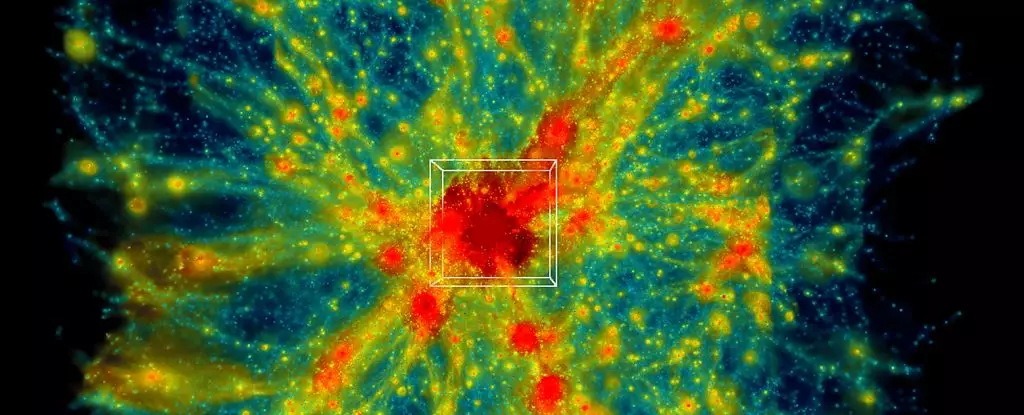In an unprecedented achievement, physicists at Oak Ridge National Laboratory have harnessed the power of the Frontier supercomputer to execute the largest astrophysical simulation in history. Completed in November 2024, this simulation—named ExaSky—utilized a staggering 9,000 computing nodes to analyze a volume of the expanding Universe greater than 31 billion cubic megaparsecs. This milestone is not just a technical triumph; it represents a significant step toward unraveling the intricate mysteries of the Universe, particularly its enigmatic dark matter.
The ExaSky simulation aims to deepen our understanding of the expansive cosmos by examining the interplay between dark matter and ordinary matter or atomic matter. As noted by physicist Salman Habib of Argonne National Laboratory and a leader in this groundbreaking endeavor, there are two fundamental constituents of the Universe: dark matter, which interacts gravitationally, and the conventional matter that we are more familiar with. To comprehensively study the Universe’s dynamics, scientists must simulate both these components while also accounting for the interactions of hot gas, star formation, black holes, and galaxies—the essential elements of cosmological hydrodynamics simulations.
Pioneering Methods to Examine Cosmic Evolution
When astronomers peer across the vastness of space, they are essentially gazing back in time, piecing together a narrative of cosmic evolution. However, the processes that govern the Universe’s transformations unfold over colossal timescales, making real-time observation virtually impossible. Consequently, simulations like ExaSky have become essential tools for cosmologists. They allow researchers to accelerate time infinitely—zooming in and out on various phenomena within the universe, akin to playing god in a digital expanse.
However, creating a realistic model of the cosmos is no small feat. The Universe is colossal and immensely complex, requiring advanced mathematical models and the unparalleled computational capacity provided by supercomputers like Frontier. Even with such technology, researchers often find it necessary to simplify their models, omitting various factors to enhance efficiency. Historically, significant variables needed for hydrodynamic simulations were frequently left out, thereby limiting the scope of earlier studies.
According to Habib, previous simulations were often constrained to a gravitational-only approximation, rendering them less effective at depicting a detailed and dynamic Universe. The ambition of researchers to simulate large volumes of the Universe, as observed by prominent telescopes like the Rubin Observatory in Chile, remained largely unattainable until the advent of advanced computational methods and infrastructure.
The path to achieving the monumental ExaSky simulation involved years of refining not only the algorithms and mathematical models but also the Hardware/Hybrid Accelerated Cosmology Code vital for its execution. The upgrades transforming Frontier into the world’s fastest supercomputer were instrumental in expanding the scope of the simulation. With an eye toward generating realistic models for cosmological study, the team behind ExaSky was able to increase the simulation volume significantly.
Despite only representing a fraction—0.001 percent—of the total volume of their intended simulation, the results anticipated from ExaSky promise to offer groundbreaking insights into the structure and behavior of the Universe. The sheer size and depth of their simulation enable researchers to draw direct comparisons with modern observational surveys, particularly vital as observational technologies advance in sophistication.
As astrophysicists anticipate the forthcoming revelations from the ExaSky project, the implications of this research ripple beyond mere academic inquiry. The insights gained from these simulations could potentially illuminate the nature of dark matter and provide answers to some of the most perplexing questions in cosmology today. The collaboration of advanced computing and astrophysical theory may not only enhance our understanding of the cosmos but could lead us to redefine our place within it.
The ExaSky simulation marks a transformative moment in astrophysics, merging technological prowess with scientific inquiry. As this project evolves, it stands to redefine our understanding of the Universe and our origins, forging a path for future exploration of the cosmos. With the advantages of exascale computing at their disposal, physicists like Habib and his colleagues are on the forefront of a rapidly changing field, armed with the tools necessary to peel back the layers of time and space, providing initial glimpses into the profound complexities of existence itself.

